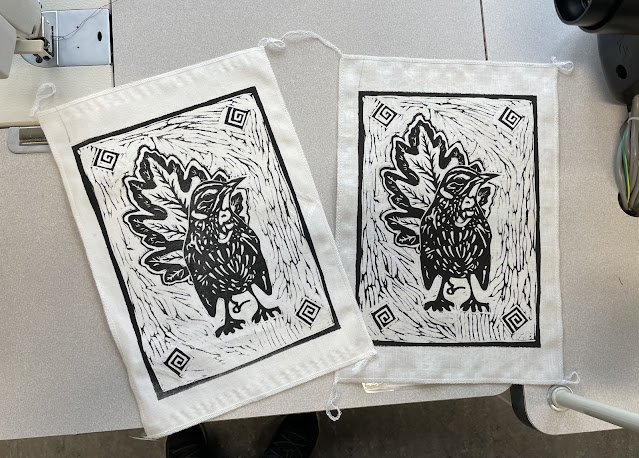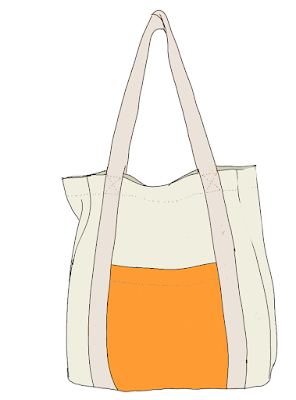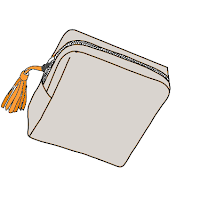I searched for an orange background, but unfortunately, the ones that suited my designs weren't free. So, I decided to use a yellow background instead. Since yellow is close to orange on the colour wheel, I believe it will complement my designs well. Next, I used Illustrator to begin working on my boards. Firstly, I adjusted the opacity to approximately 60% to ensure that my text would be clear and visible.
Thursday, 30 May 2024
Boards: Concept & Ideal User Persona
I searched for an orange background, but unfortunately, the ones that suited my designs weren't free. So, I decided to use a yellow background instead. Since yellow is close to orange on the colour wheel, I believe it will complement my designs well. Next, I used Illustrator to begin working on my boards. Firstly, I adjusted the opacity to approximately 60% to ensure that my text would be clear and visible.
Tuesday, 28 May 2024
Website: Portfolio
I started updating my website by preparing the cover page for my next portfolio. Using Photoshop, I added my logo, "The Galgankowo," to the bottom part of the image.
Make-up bag & Apron outcomes


Wednesday, 22 May 2024
Fine Art Print Workshop & Sewing Workshop: Tote Bag
I used a sewing workshop to finish my 3D project, a tote bag. took with me the materials that I had cut out from the ready pattern and the lino print design, which I created using the linocut technique in the Fine Art Print Workshop (video bellow).
Overall, the tote bag turned out well, with a strong and durable structure, despite the handles being slightly off. Two really useful tools in this project were the disappearing purple marker and the pattern maker. The marker was great for marking the right position without leaving a trace after a few hours; it just vanished. The pattern maker tool helped me find the right position. I also believe that using orange for the arms of the bag gives it a unique and eye-catching finish plus, it's a perfect match to Ahelina's city logo, adding an extra layer of significance to the design.
2D Final Results
I tried to make my background better with watercolours, thinking of a fire-like style. But it seemed like there was too much going on back there. So, I decided to try again with lighter colours that still fit the fire theme.
Monday, 20 May 2024
The bowl part 2
Another approach to make a bowl involved working with pieces of wood connected with epoxy resin. Unfortunately, after three weeks of waiting, the bottom part of the bowl still hadn't dried. To proceed with my project, I needed to cut out the bottom part.
When I did this, I didn’t cut it straight. Since it was a mix of epoxy resin and wood, I couldn't use a sander for either material without damaging the other. I had to sand it manually with the largest sandpaper I could find ( see below the fig.1) the biggest piece of sandpaper was glued to a big wooden desk. This was the hardest part of all. I couldn't achieve a perfectly straight finish because I was running out of time, and my hand was in a lot of pain.
After setting up the bowl on the machine, the next step was to flatten its top surface. Some wooden bits were uneven, as the epoxy resin didn't cover them evenly. I used a sharp gouge tool to smooth out these bumps.
Thursday, 16 May 2024
Maerial Research
Epoxy Resin
Epoxy Resin for Crafts
According to the producer, Craft Resin epoxy has little smell, is safe, and doesn't contain harmful chemicals. It's a food-grade resin for home and pro use that's safe for you and the environment when used correctly (World Wildlife Fund, 2024). I've mostly decided to use Craft Resin epoxy because it's a food-grade epoxy. Another reason I chose Craft Resin epoxy is because it's non-toxic and doesn't contain harmful chemicals like VOCs or solvents, making it more environmentally friendly.
Cotton
Cotton is a natural material that comes from the cotton plant. First of all, cotton fabric is comfortable to wear because it feels natural on your skin, and its durability makes it a popular choice for clothing. Secondly, cotton is very strong, so it can resist mechanical and chemical wear and tear. Finally, cotton is also breathable. In the summer, it keeps you cool, and in the winter, it doesn't get too cold (House of U, n.d.). I don't make clothes, so I'm not too concerned with comfort and breathability. It's good to know, but what really matters to me is cotton's strength and its ability to resist mechanical and chemical wear and tear. This is crucial for my tote bag design, as I plan to make a large bag and need the material to be durable and resistant to tearing. Additionally, cotton is easy to clean and can absorb a lot of moisture. Despite being fairly rough, it is strong and sturdy due to its inner structure. Cotton can be easily painted, allowing for a variety of designs and colours (House of U, n.d.). An important aspect for me is that cotton can be easily painted, as I plan to use lino print and oil-based inks for my designs. Organic cotton is typically less harmful to the environment than conventional cotton, mainly because it is grown without the use of pesticides (Krosofsky, 2021). This is why I'm thinking about using organic cotton in my projects. According to WWF (2024), cotton is widely used around the world, but the way it's currently produced harms the environment.
Oil-based inks are a popular choice for linocut printing. These inks consist of pigments suspended in oil, which allows for smooth application and vibrant colours. Unlike water-based inks, oil-based inks take longer to dry, which can be beneficial for specific printing techniques. AlsoOil-based inks stick well to different surfaces like paper and fabric, making them useful for various artistic projects. But it's important to remember that cleaning oil-based inks requires using mineral spirits or other solvents, which can harm the environment if not handled correctly (Mary, 2023). However, many artists choose oil-based inks for their rich colours, durability, and versatility in printmaking, aligning with the eco-friendly ethos of linocut printing.
Bees Wax
I chose beeswax to finish my wood bowl. It's good for salad bowls, wooden spoons, and cutting boards, and it's safe for food. It's also great for children's toys because it's made from natural ingredients (Clapham's Beeswax Product Ltd, 2024). Beeswax highlights the wood's colours, so I decided to use it in my artwork.
Reference List:
House of U. (n.d.). Everything about cotton: the specifications of cotton fabric. [online] Available at: https://www.houseofu.com/en/blog/everything-about-cotton-the-specifications-of-cotton-fabric/ [Accessed 16 May 2024].
Krosofsky, A. (2021). Is Cotton Sustainable? [online] Green Matters. Available at: https://www.greenmatters.com/p/is-cotton-sustainable [Accessed 16 May 2024].
World Wildlife Fund (2024). Sustainable Agriculture Cotton. [online] Available at: https://www.worldwildlife.org/industries/cotton [Accessed 16 May 2024].
Develop of 2D outcomes




In that step, the final move is transferring the design onto a linoleum block and cutting it. The next step will be to visit the final art print workshop and check how it looks after adding inks.
I really enjoyed developing the linocut technique. Although I cut my hand several times, I can see my progress and definitely want to continue with this technique even after finishing these projects. I love the unique vibe it brings to my 2D artworks. I can't wait to transfer these designs and see the final results.
At this stage, it's hard to say what I would change. I think I'll be able to see what needs improvement once I see the results from both the linocut prints and the finished 3D outcomes. Maybe I need to add more detail or cut out something from the design, but I'll know that after I transfer my linocut to paper sheets/ materials.
Reflection: Art Portfolio 2
In Art Portfolio 2, I learned techniques for developing ideas. The classes showed me how to evolve, my ideas, and change and improve ...
-
Brushing Brush Marks Brushing technique The brushing technique is suitable for both base and decorative layers. The choice of brush size ...
-
At this point, I've made two separate material boards: one for textiles and related materials, and another for the materials used i...
-
Welcome back after a Christmas break! Quick reminder: my name is Aleksandra and this semester I will continue this blog on the subject - Ar...





























































